Marketing communications. SECTION 17. 1 What You’ll Learn






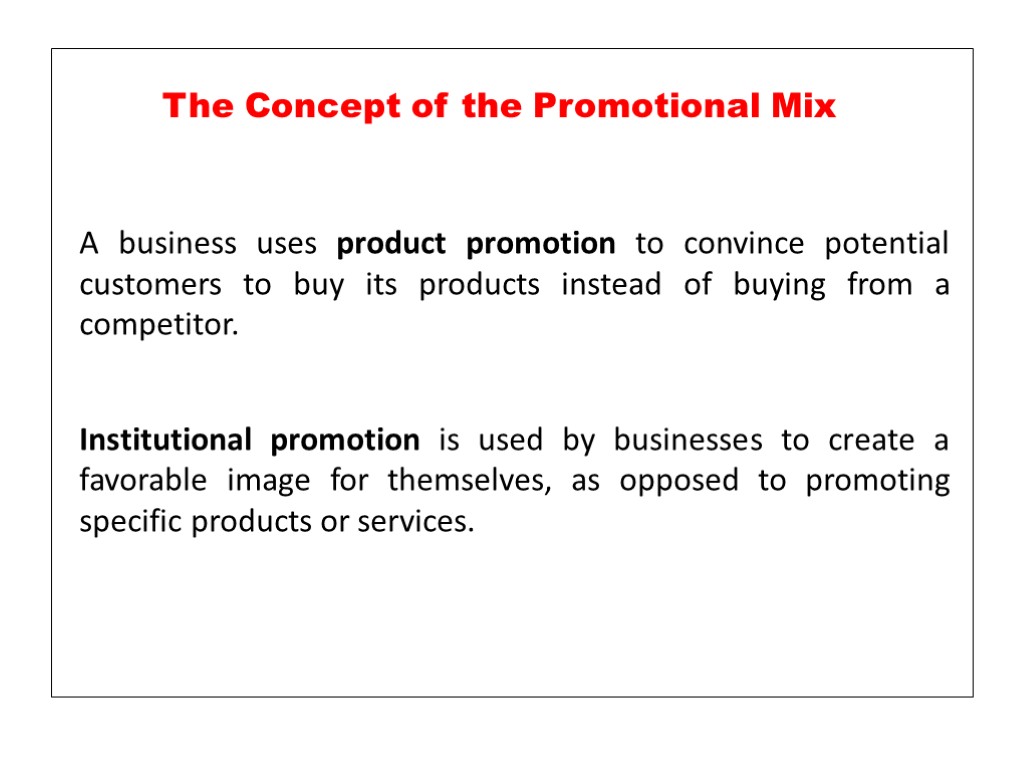



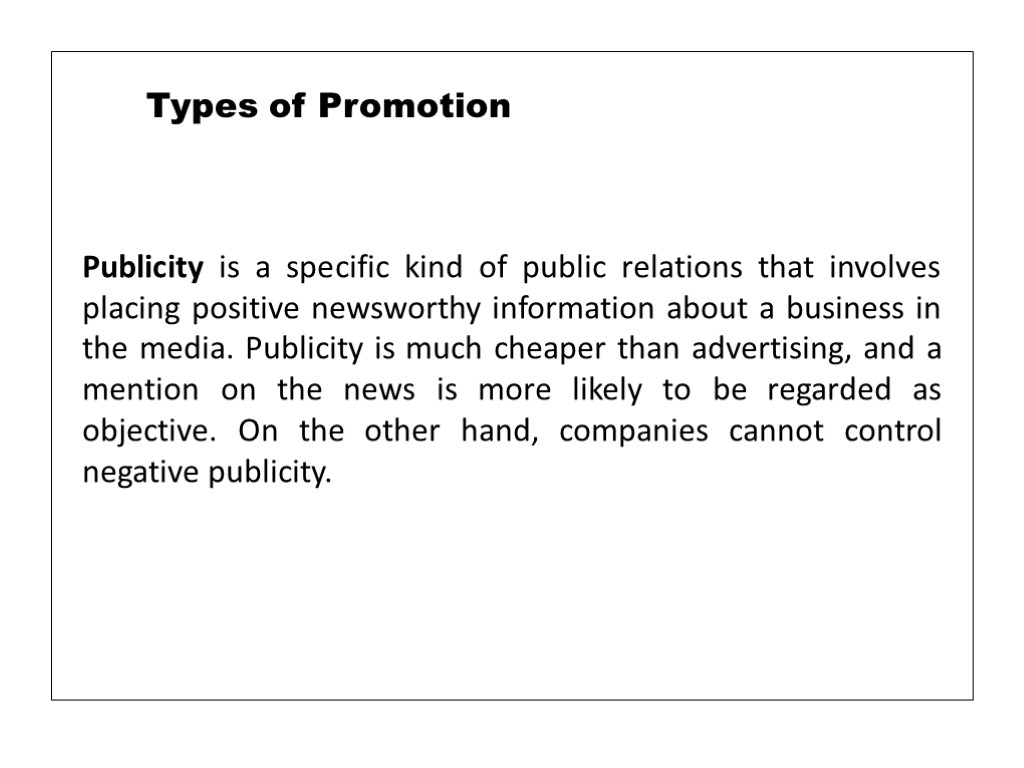


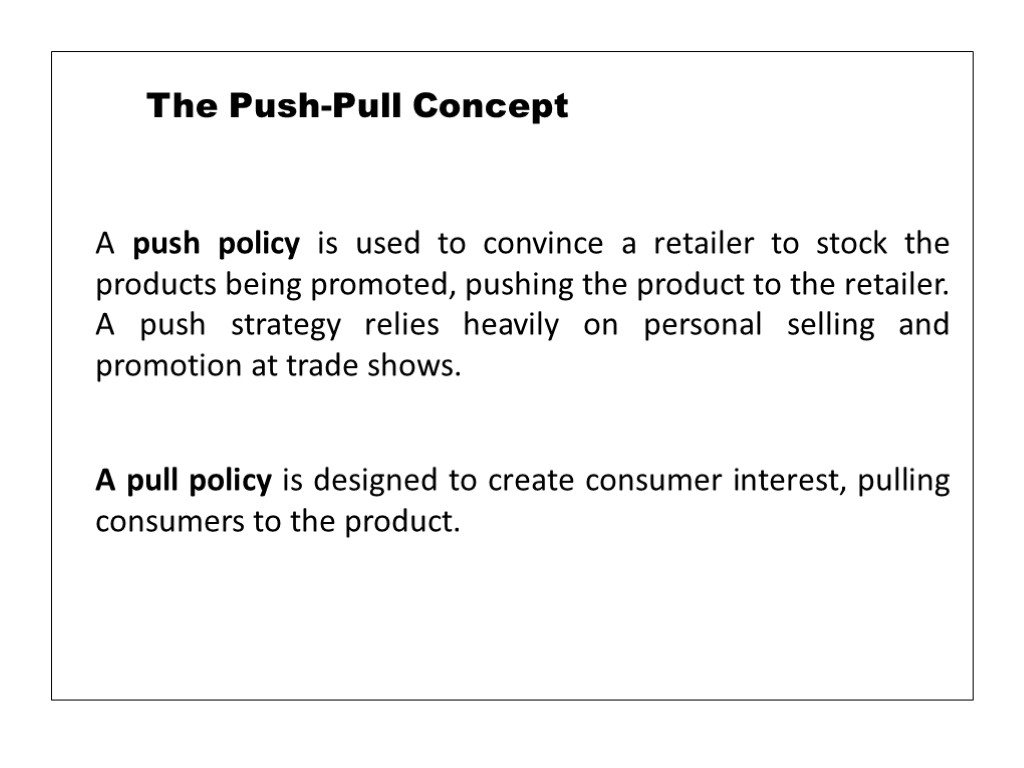






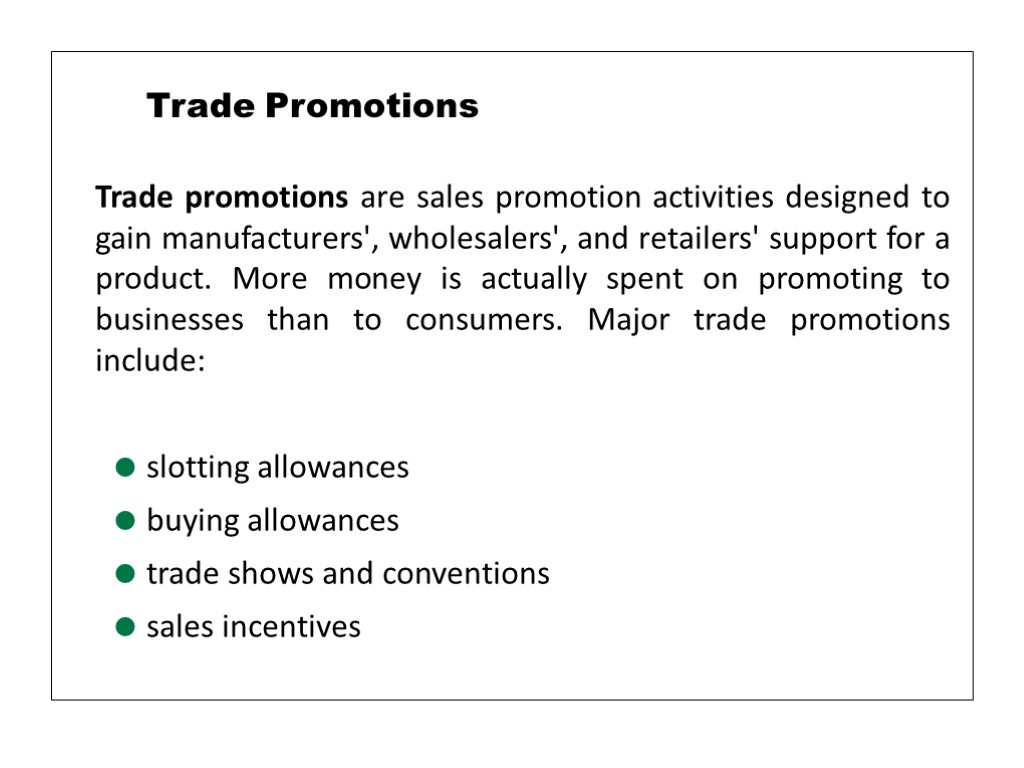







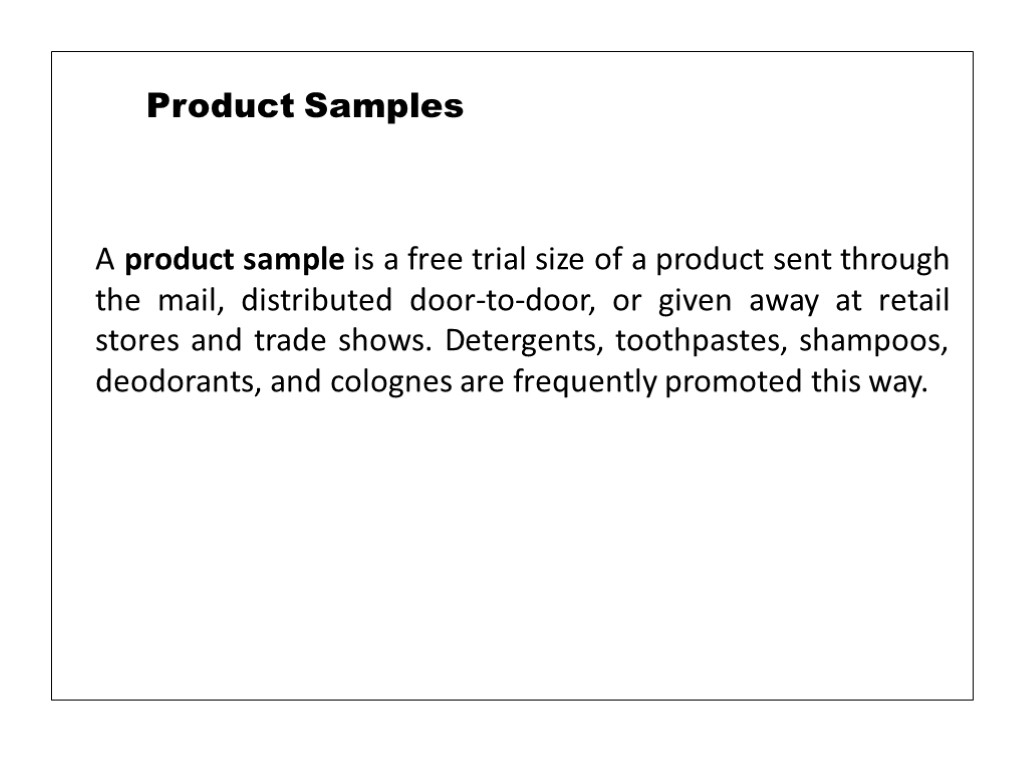





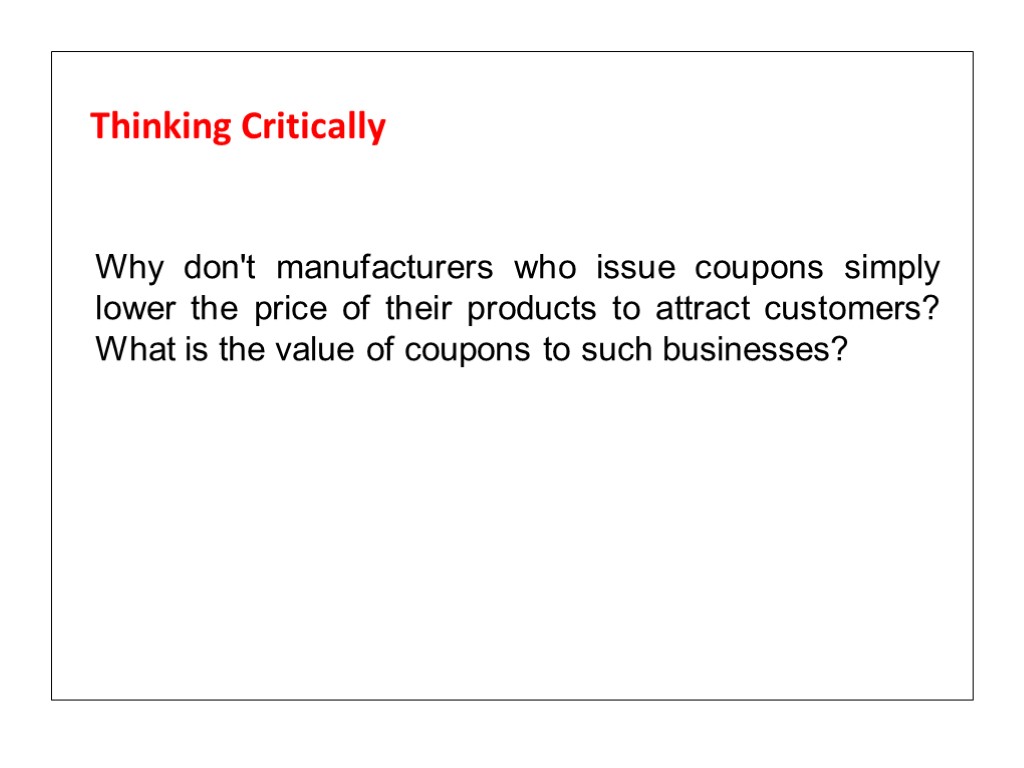

marketing_communications_session_1.pptx
- Количество слайдов: 35
 Marketing communications
Marketing communications
 SECTION 17.1 What You'll Learn The role of promotion in marketing The concept of promotional mix The characteristics of personal selling and advertising The nature and scope of publicity The Promotional Mix
SECTION 17.1 What You'll Learn The role of promotion in marketing The concept of promotional mix The characteristics of personal selling and advertising The nature and scope of publicity The Promotional Mix
 SECTION 17.1 The Promotional Mix Why It's Important Since businesses must continually promote their organizations, products, and policies to gain customer acceptance, you will need to learn successful promotional strategies.
SECTION 17.1 The Promotional Mix Why It's Important Since businesses must continually promote their organizations, products, and policies to gain customer acceptance, you will need to learn successful promotional strategies.
 SECTION 17.1 The Promotional Mix Key Terms promotion promotional mix product promotion institutional promotion advertising sales promotion public relations publicity push policy pull policy
SECTION 17.1 The Promotional Mix Key Terms promotion promotional mix product promotion institutional promotion advertising sales promotion public relations publicity push policy pull policy
 Promotion is any form of communication a business or organization uses to inform, persuade, or remind people about its products. Promotional mix is a combination of the different types of promotion. A business decides on the promotional mix that will be most effective in persuading potential customers to purchase its products. The Concept of the Promotional Mix
Promotion is any form of communication a business or organization uses to inform, persuade, or remind people about its products. Promotional mix is a combination of the different types of promotion. A business decides on the promotional mix that will be most effective in persuading potential customers to purchase its products. The Concept of the Promotional Mix
 A business uses product promotion to convince potential customers to buy its products instead of buying from a competitor. Institutional promotion is used by businesses to create a favorable image for themselves, as opposed to promoting specific products or services. The Concept of the Promotional Mix
A business uses product promotion to convince potential customers to buy its products instead of buying from a competitor. Institutional promotion is used by businesses to create a favorable image for themselves, as opposed to promoting specific products or services. The Concept of the Promotional Mix
 Types of Promotion There are four basic types of promotion: personal selling advertising sales promotion public relations
Types of Promotion There are four basic types of promotion: personal selling advertising sales promotion public relations
 Personal Selling is one of the largest forms of promotion. It is designed to complete a sale once a customer is attracted to a business. Advertising is any paid form of non-personal presentation and promotion of ideas, goods, or services by an identified sponsor. American businesses spend about $200 billion each year on advertising. Types of Promotion
Personal Selling is one of the largest forms of promotion. It is designed to complete a sale once a customer is attracted to a business. Advertising is any paid form of non-personal presentation and promotion of ideas, goods, or services by an identified sponsor. American businesses spend about $200 billion each year on advertising. Types of Promotion
 Sales Promotion is everything besides personal selling, advertising, and public relations that is used to stimulate consumer purchasing and sales effectiveness. Public Relations refers to any activity designed to create a favorable image of a business, its products, or its policies. Types of Promotion
Sales Promotion is everything besides personal selling, advertising, and public relations that is used to stimulate consumer purchasing and sales effectiveness. Public Relations refers to any activity designed to create a favorable image of a business, its products, or its policies. Types of Promotion
 Publicity is a specific kind of public relations that involves placing positive newsworthy information about a business in the media. Publicity is much cheaper than advertising, and a mention on the news is more likely to be regarded as objective. On the other hand, companies cannot control negative publicity. Types of Promotion
Publicity is a specific kind of public relations that involves placing positive newsworthy information about a business in the media. Publicity is much cheaper than advertising, and a mention on the news is more likely to be regarded as objective. On the other hand, companies cannot control negative publicity. Types of Promotion
 Most businesses use more than one type of promotion to achieve their promotional goals. Each type of promotion is designed to complement one another, and all must be coordinated. Coordination of the Promotional Mix
Most businesses use more than one type of promotion to achieve their promotional goals. Each type of promotion is designed to complement one another, and all must be coordinated. Coordination of the Promotional Mix
 In large companies, the marketing department establishes a promotion budget, allocates resources, coordinates the campaign, and determines the right promotional mix for the company. In smaller businesses, these responsibilities often rest with the owner-operator, are divided among employees, or contracted to outside agencies. Promotional Budget
In large companies, the marketing department establishes a promotion budget, allocates resources, coordinates the campaign, and determines the right promotional mix for the company. In smaller businesses, these responsibilities often rest with the owner-operator, are divided among employees, or contracted to outside agencies. Promotional Budget
 A push policy is used to convince a retailer to stock the products being promoted, pushing the product to the retailer. A push strategy relies heavily on personal selling and promotion at trade shows. A pull policy is designed to create consumer interest, pulling consumers to the product. The Push-Pull Concept
A push policy is used to convince a retailer to stock the products being promoted, pushing the product to the retailer. A push strategy relies heavily on personal selling and promotion at trade shows. A pull policy is designed to create consumer interest, pulling consumers to the product. The Push-Pull Concept
 Reviewing Key Terms and Concepts 1. What is promotion? 2. Describe the concept of promotional mix. 3. What is the difference between product and institutional promotion? 4. Why is personal selling the most expensive form of promotion? 5. What is the difference between publicity and advertising?
Reviewing Key Terms and Concepts 1. What is promotion? 2. Describe the concept of promotional mix. 3. What is the difference between product and institutional promotion? 4. Why is personal selling the most expensive form of promotion? 5. What is the difference between publicity and advertising?
 Some people think that advertising is a waste of money that needlessly raises the prices of goods and services. What do you think? Is the money spent on advertising justified? Provide an argument to support your position. Thinking Critically
Some people think that advertising is a waste of money that needlessly raises the prices of goods and services. What do you think? Is the money spent on advertising justified? Provide an argument to support your position. Thinking Critically
 SECTION 17.2 What You'll Learn The characteristics of sales promotion The concept of trade promotions The different kinds of consumer sales promotions Sales Promotion
SECTION 17.2 What You'll Learn The characteristics of sales promotion The concept of trade promotions The different kinds of consumer sales promotions Sales Promotion
 Sales Promotion Why It's Important To be successful, a business must continually promote its products. This section introduces you to the concept of sales promotion and the techniques used to increase sales and to inform customers about a company’s products. SECTION 17.2
Sales Promotion Why It's Important To be successful, a business must continually promote its products. This section introduces you to the concept of sales promotion and the techniques used to increase sales and to inform customers about a company’s products. SECTION 17.2
 Key Terms slotting allowance sales incentives premiums incentives licensing promotional tie-ins SECTION 17.2 Sales Promotion
Key Terms slotting allowance sales incentives premiums incentives licensing promotional tie-ins SECTION 17.2 Sales Promotion
 Sales promotion is a short-term incentive offered to encourage buying a good or service. Sales promotions can be directed toward manufacturers, wholesalers, retailers, and consumers, as well as a company's employees. Sales promotions are usually supported by advertising activities. Sales Promotion
Sales promotion is a short-term incentive offered to encourage buying a good or service. Sales promotions can be directed toward manufacturers, wholesalers, retailers, and consumers, as well as a company's employees. Sales promotions are usually supported by advertising activities. Sales Promotion
 Trade promotions are sales promotion activities designed to gain manufacturers', wholesalers', and retailers' support for a product. More money is actually spent on promoting to businesses than to consumers. Major trade promotions include: slotting allowances buying allowances trade shows and conventions sales incentives Trade Promotions
Trade promotions are sales promotion activities designed to gain manufacturers', wholesalers', and retailers' support for a product. More money is actually spent on promoting to businesses than to consumers. Major trade promotions include: slotting allowances buying allowances trade shows and conventions sales incentives Trade Promotions
 Slotting allowances are cash premiums paid by the manufacturer to a retail chain for the costs involved in placing a new product on its shelves. Buying allowances are price discounts given by manufacturers to wholesalers and retailers to encourage the purchase of a product. Trade Promotions
Slotting allowances are cash premiums paid by the manufacturer to a retail chain for the costs involved in placing a new product on its shelves. Buying allowances are price discounts given by manufacturers to wholesalers and retailers to encourage the purchase of a product. Trade Promotions
 Trade shows and conventions are events at which businesses can introduce new products, encourage increased sales of existing products, and gain continued company and product support. Sales incentives are awards given to managers and employees who successfully meet or exceed sales quotas. Trade Promotions
Trade shows and conventions are events at which businesses can introduce new products, encourage increased sales of existing products, and gain continued company and product support. Sales incentives are awards given to managers and employees who successfully meet or exceed sales quotas. Trade Promotions
 Sales promotion efforts designed to encourage customers to buy a product are called consumer promotions. They include: premiums incentives product samples loyalty marketing programs promotional tie-ins product placement visual merchandising and displays Consumer Sales Promotions
Sales promotion efforts designed to encourage customers to buy a product are called consumer promotions. They include: premiums incentives product samples loyalty marketing programs promotional tie-ins product placement visual merchandising and displays Consumer Sales Promotions
 Premiums are low-cost items given to consumers at a discount or for free. Some popular premiums are: coupons factory packs traffic builders coupon plans Premiums
Premiums are low-cost items given to consumers at a discount or for free. Some popular premiums are: coupons factory packs traffic builders coupon plans Premiums
 Coupons are certificates that entitle customers to cash discounts on goods or services. Factory packs are free gifts placed in product packages. These are common in cereal boxes. Premiums
Coupons are certificates that entitle customers to cash discounts on goods or services. Factory packs are free gifts placed in product packages. These are common in cereal boxes. Premiums
 Traffic builders are low-cost premiums such as pens or key chains given away free to consumers for visiting a new store or attending an event. Coupon plans are ongoing programs offering a variety of premiums in exchange for labels, coupons, or other tokens. Premiums
Traffic builders are low-cost premiums such as pens or key chains given away free to consumers for visiting a new store or attending an event. Coupon plans are ongoing programs offering a variety of premiums in exchange for labels, coupons, or other tokens. Premiums
 Incentives generally are higher-priced products earned and given through contests (games of skill), sweepstakes (games of chance), and rebates (discounts from manufacturers). Businesses use incentives to promote many products because they create customer excitement and increase sales. Incentives
Incentives generally are higher-priced products earned and given through contests (games of skill), sweepstakes (games of chance), and rebates (discounts from manufacturers). Businesses use incentives to promote many products because they create customer excitement and increase sales. Incentives
 A product sample is a free trial size of a product sent through the mail, distributed door-to-door, or given away at retail stores and trade shows. Detergents, toothpastes, shampoos, deodorants, and colognes are frequently promoted this way. Product Samples
A product sample is a free trial size of a product sent through the mail, distributed door-to-door, or given away at retail stores and trade shows. Detergents, toothpastes, shampoos, deodorants, and colognes are frequently promoted this way. Product Samples
 Loyalty marketing programs, also called frequent buyer programs, reward customers for making multiple purchases. Loyalty marketing was popularized in the 1980s by the airline industry, which instituted frequent flier programs. Loyalty Marketing Programs
Loyalty marketing programs, also called frequent buyer programs, reward customers for making multiple purchases. Loyalty marketing was popularized in the 1980s by the airline industry, which instituted frequent flier programs. Loyalty Marketing Programs
 Promotional tie-ins involve coordinated sales promotional arrangements between one or more retailers or manufacturers. Example: For the promotion of the Goofy movie, Disney Studios cooperated with McDonald's which made a special Happy Meal with a Fisher-Price Toddler Toy. Promotional Tie-Ins
Promotional tie-ins involve coordinated sales promotional arrangements between one or more retailers or manufacturers. Example: For the promotion of the Goofy movie, Disney Studios cooperated with McDonald's which made a special Happy Meal with a Fisher-Price Toddler Toy. Promotional Tie-Ins
 With product placement, an organization can develop product recognition by making sure that a product is featured in special events, on television, or in the movies. Example: Apple's iMac appeared in popular television shows when it was first introduced. Product Placement
With product placement, an organization can develop product recognition by making sure that a product is featured in special events, on television, or in the movies. Example: Apple's iMac appeared in popular television shows when it was first introduced. Product Placement
 Visual merchandising refers to the coordination of all physical elements in a place of business so that it projects the right image to its customers. Displays refer to the visual and artistic aspects of presenting a product to a target group of customers. Visual Merchandising and Displays
Visual merchandising refers to the coordination of all physical elements in a place of business so that it projects the right image to its customers. Displays refer to the visual and artistic aspects of presenting a product to a target group of customers. Visual Merchandising and Displays
 Reviewing Key Terms and Concepts 1. Why do businesses use sales promotions? 2. What unique characteristics do sales promotions have? 3. What are trade promotions? 4. What are consumer promotions? 5. Explain the difference between a sweepstakes and a contest.
Reviewing Key Terms and Concepts 1. Why do businesses use sales promotions? 2. What unique characteristics do sales promotions have? 3. What are trade promotions? 4. What are consumer promotions? 5. Explain the difference between a sweepstakes and a contest.
 Why don't manufacturers who issue coupons simply lower the price of their products to attract customers? What is the value of coupons to such businesses? Thinking Critically
Why don't manufacturers who issue coupons simply lower the price of their products to attract customers? What is the value of coupons to such businesses? Thinking Critically
 Questions?
Questions?

